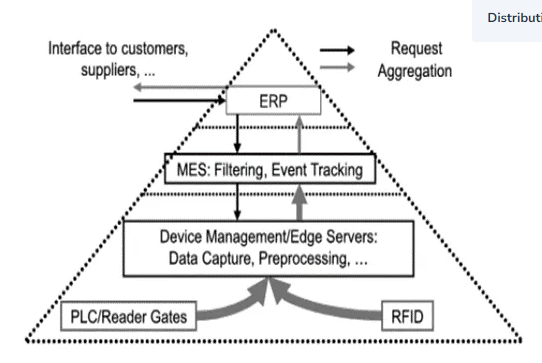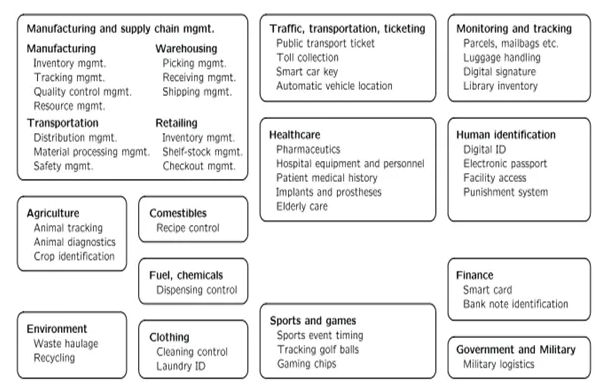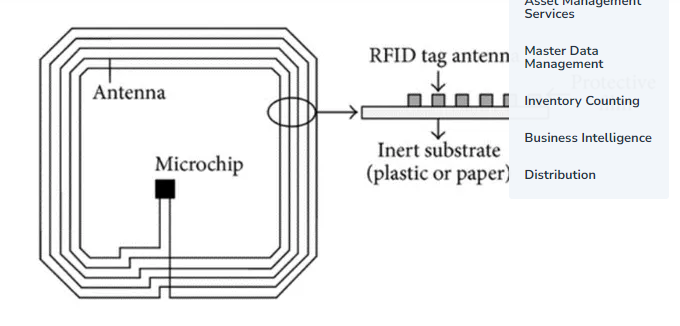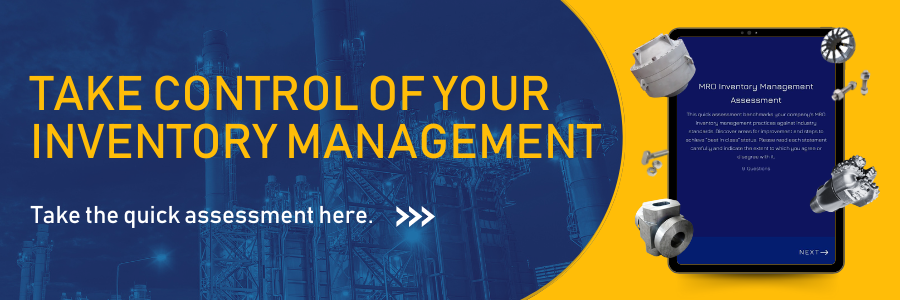RFID Technology and the
Management of Spare Parts Inventory
Why Inventory Accuracy Matters. An Examination of How RFID Technology Improves the Management of Spare Parts Inventory
- Placing inventory in the wrong aisle or shelf
- Manual input errors during the stocktaking process
- Incorrect labeling and identification
- Receiving and dispatching errors
- Anticipate stock-outs in real-time
- Implement demand forecasting
- Employ just-in-time (JIT) inventory or more closely match supply with demand – which reduces overhead expenses and inventory cost

RFID technology is a comprehensive solution that results in the elimination of many business problems we have delineated above since it seeks to not only improve asset visibility but also:
- Efficiently conduct annual inventory counts since RFID technology is an elastic IoT resource that can be annexed to other back-end processes and systems
- Improve accuracy in scanning and tracking of inventory
- Allow easier updates and flexibility to processes and logistical changes
- Prevent loss or theft of spare parts throughout the supply chain
- Remotely collect detailed analytical and interactive information like, part number, manufacturer of the spare parts, and date of manufacture
- Easily trace faulty parts in case of product recalls
- Give companies the ability to collect data that is vital in the implementation of first-in, first-out (FIFO), first-expiring first-out (FEFO), or last-in-first-out (LIFO) valuation methods, to better monitor cashflow, inventory replenishment rates, as well as the rates of inflation and deflation.
As an expansible and scalable resource, it is also worth noting that RFID has massive uptakes in other sectors, as shown in the diagram below.

It performs these functions by storing and retrieving data remotely by electromagnetically transferring RF signals or inductive coupling between tags (transmitters/ responders) and readers (transmitters/receivers).
Essentially, an RFID system consists of at least one RFID transponder with active or passive tags and an RIFD reader.
- The integrated circuit containing the stored memory
- An encapsulation polymer/substrate.
- The antenna

Using the data stored in the tags, their circuits decode a transmission signal from the reader to generate a coded alternating magnetic field as a response signal. This is why the ability of RFID systems to read and save data is not contingent upon having a clear line of sight like in the case of barcode scanners. You simply need to be within the range of the tag without moving from shelf to shelf.
“Object identification problem requires the identification of multiple objects at the same time reliably and minimal user intervention. Conventional techniques like bar codes are not so efficient at solving this problem. With bar codes a line of sight is required between the reading device and the tag. An operator needs to point the reading device to every object individually and scan it, which is time consuming and error prone. In addition to this, one needs to know the exact number of objects which need to be identified and their location”
Also worth noting is that these two general principles of operation are common across the various types of tags that are broadly classified as either passive or active tags.
A Passive RFID tag does not generate its own alternating magnetic field but has an electrical influence on the alternating magnetic field sent by the reader. Thus, a passive tag uses the reader’s energy to generate a response to a query—this is a huge advantage since they can run without a battery and hence are very cheap.
As for the active tag, it must be equipped with a battery for it to be able to emit a signal and to run the microchip’s circuitry. This gives them the ability to not only have a longer read range, but also to trigger their own communication with the reader while also having the possibility of inter-tag communication.
Moreover, active tags can be easily annexed to other IoT devices like GPS and sensors. This is why active tags are preferred in areas where moving object localization is necessary, like pipeline transport, toll booths, track shipping containers, and conveyor systems.
Active tags are more expensive than passive tags because of these added functionalities.
RFID tags need a layer of software to interface and process data from the environment from which they are deployed. As an IoT device, its software can be configured and customized to not only read data but also encrypt it.
A low-cost security and privacy protocol, RFID can be programmed to completely format data with location privacy concerns in mind, this is why some of them have kill functions.
The agile nature of RFID is evidenced by the fact that it allows for the complete integration of workstations for operators and end-users through the linking of RFID technology to a company’s IT structure.
RFID can easily be integrated into Enterprise Resource Planning (ERP) solutions, Computer-aided production engineering (CAPE) systems, and Inventory Management Software.
Within the space of business intelligence tools, wireless networking protocols have evolved to the extent that some have solved technical barriers like latency, directionality, interoperability, and weak identification and authentication systems.
LoRaWAN (Long Range Wide Area Network) is one such communication protocol that has seen massive uptake amongst companies who have to track and monitor assets in remote areas using the Low-Power Wide Area Network (LPWAN) technology.
The unique selling point is the fact you can send small amounts of bidirectional data over a span of between two and fifteen miles, all the while using battery-powered devices that can last many years.
Given that it is a standardized protocol, it does not require the deployment of specific infrastructure and antennas. The reason being, the LoRa Alliance has mobilized close to 500 companies from 180 countries to promote LPWAN connectivity and guarantee interoperability.
With LoRaWAN roaming possible, it has truly emerged as a large-scale, cost-efficient IoT connectivity networking protocol purpose-built for connecting millions of devices for different industries and sectors.
RFID is an amazing technology and its effectiveness can change the way you do business. However, it comes with a few drawbacks that should be considered. RFID technology can be costly due to the infrastructural needs it takes to make the system capable of operating. The money, time, and effort you save in the long run may make the system worth implementing. Size constraints can also affect the program just depending on the application the RFID system is used on. The tags are designed for specific sizes and materials, which only add on to the cost if the material is on the more expensive end. You also have to ask yourself if installing RFID tech is the right solution for your issue. Problems are different for different companies for multiple reasons, and simply adding in new technology and expecting a plug and play solution isn’t the best route to go. The environment you work in could simply interfere with the radio signals like certain types of metals.
RFID is still a great technology to make the management of spare part inventory easier than most current systems of doing so. Accuracy matters, and can cost you time and money. Eliminate these variables from your process and begin making the appropriate corrections.
Inventory Management Solutions
Asset Management Solutions
Distribution Management Solutions




